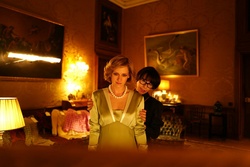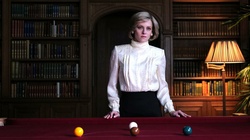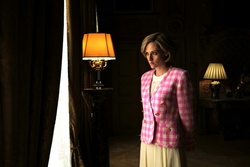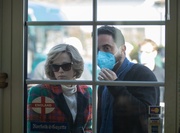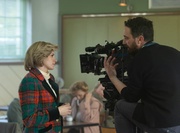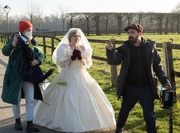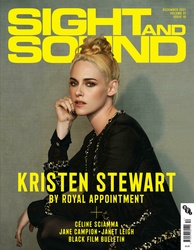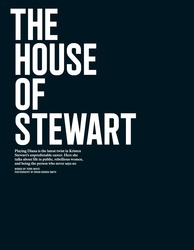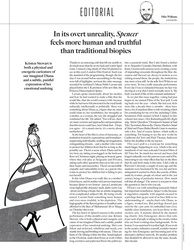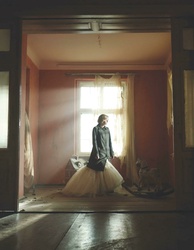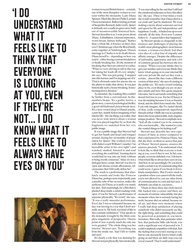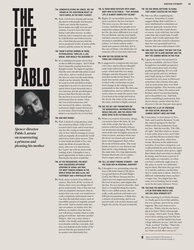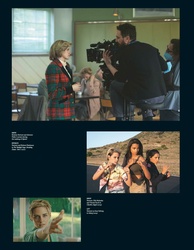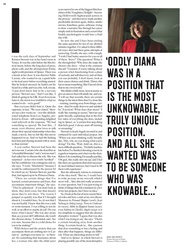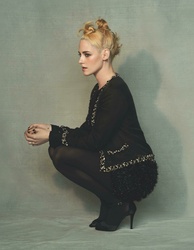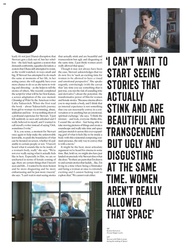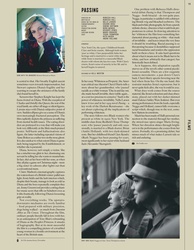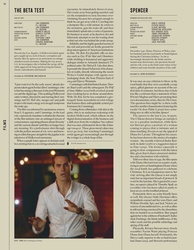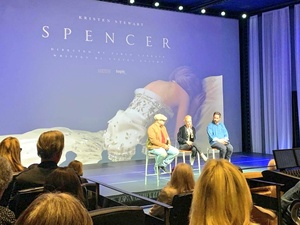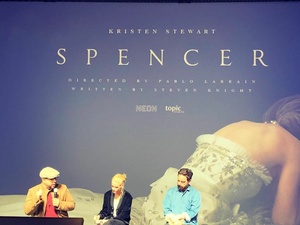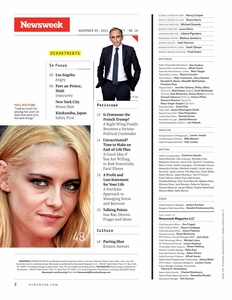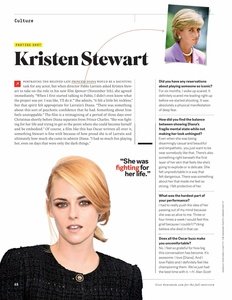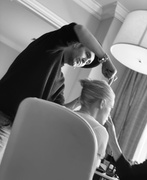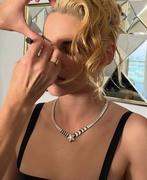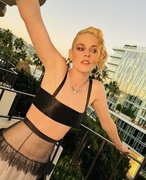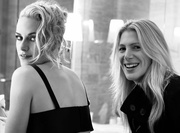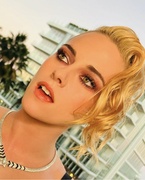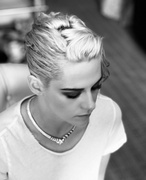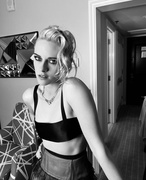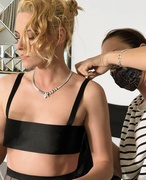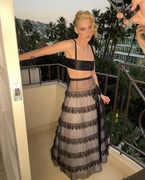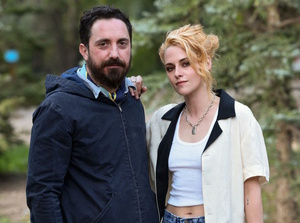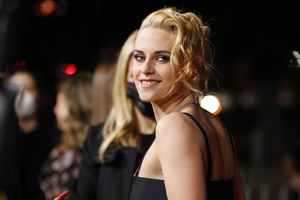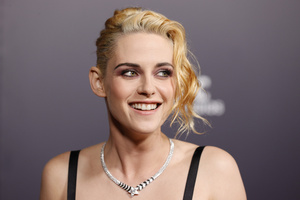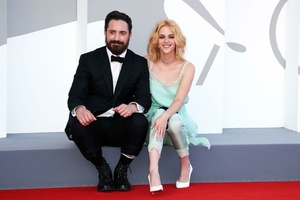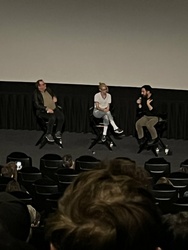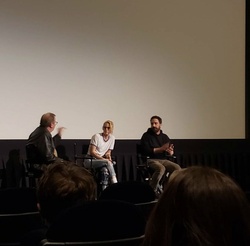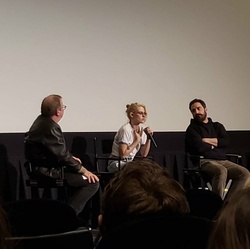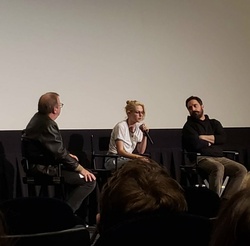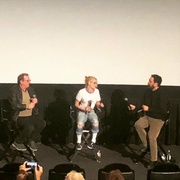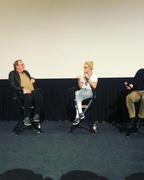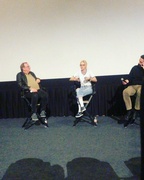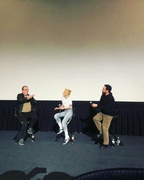COLLIDER: I like throwing some curve balls at the beginning. I promise these are easy. I think. If you guys could get the financing to make anything you want, what would you make and why?
KRISTEN STEWART: Not to sound whatever, but like, I think he is doing exactly what he wants to do. I think that he's actually in a position of being able to dream of yeah, kind of the...
PABLO LARRAIN: I would go back and make this movie again. That's for sure. If I could. And I remember that when we finished the movie, when we wrapped, I told you that I would keep shooting this film for another two or three months easily. It's just was such an incredible experience that I didn't want to finish that.
STEWART: He's like, I just did that. Yeah. And if I were to green light anything right now, it would probably be the movie that I would like to make. I'm going to direct a movie soon called The Chronology of Water and that's like not, and not like shamelessly plugging that because it's nothing to... It's a small thing. But if somebody handed me money to make that right now, I would jump for joy.
You guys, if someone has never seen anything that you have ever done, what is the thing that you want them to start with?
STEWART: Well, maybe like start with... I'm like, watch every movie I've ever made, start with The Safety of Objects, get all the way to Spencer, please before you have any... I'm like see everything I've ever done. I don't know. That's like, if just like one thing, Spencer. At this point, definitely this one.
LARRAIN: I did a movie that I don't think other people have seen that I love that's called Post Mortem. So that would probably be my choice.
What do you think it actually is about Diana that has kept her in the limelight and so many people care about her so many years after she's gone.
STEWART: I think she jutted out of an institution that has kind of infamously stiff up her lip. Obviously the entire Royal family upholds an ideal and an identity that is starkly and really just very different from what Diana energetically brings to the table. I think that there are certain people that are born in this world that have a talent, like a real physical and emotional talent to bring people together. Her kind of isolation was something she wore her and was really visible on her skin. I think people just intrinsically sensed that and wanted to be human and get close to that person. I think that it was just sort of this like mutual contagious craving for human connection that made everyone go, we're here for you. That's what people do for each other. I just think the stark contrast of that in a Royal setting was pretty foundationally rocking.
LARRAIN: It's empathy, I think. Empathy towards a person that was born to privilege was born in the very unusual particular circumstances. And for some reason she was very normal and regular and people could see themself in her and the things that he went through, they were just normal and her pains are most people's pains and her joys were most people's joys. It's a very mysterious thing, but there's obviously an element of an incredible amount of humanity. And that's why, I guess the movies also tries to work with.
Kristen, I think you're one of the few people on the planet who maybe could understand a little bit of what Diana went through in terms of the paparazzi, the magazines, the focus on you, did that actually help you in playing the role?
STEWART: She has been deemed the most hunted person of our era. I think that our movie very much examines the jail break aspect of her life and her kind of sprinting swiftly towards having a life that was connected to her, an outer life, an exterior life that connected and was more in balance with her inner life. I guess I have a hard time comparing my experience with hers because I'm not running away from anything. I'm kind of moving towards people. And look, of course, I'm not like begging paparazzi to come hang out with me every day. That is annoying. They're looking at me for such different reasons that I don't feel as I just don't feel as taken from it in such a way.
I feel also that she was just somebody who there's a huge dichotomy in terms of her relationship with being photographed, because on one hand, she loved it. On the other hand, it was just like, she couldn't actually be her completely true self all the time, therefore the pictures feel fraudulent and I'm very lucky that I'm allowed to be a real person. I don't have a Royal title. I don't have to uphold some sort of like farcical ideal. I get to make mistakes and choices and do them freely and sort of move towards people that attract me in art. I get to be a little more sprawling. So it's hard for me to compare. I do know what it feels like to always kind of go like, I'm pretty sure people are looking at me right now, but the reasons are so foundationally different that it's hard. It's like kind of apples and oranges.
I completely get it. Pablo, I really enjoyed your aesthetic choices in this film, the way you shot it, the camera moves and the choice of music. Can you sort of talk about the choices you made, especially with the camera work and the music?
LARRAIN: Well, in terms of the camera work, with Claire Mathon, our cinematographer, we made two very simple choices at the beginning. One was to be really, really close to Kristen, like physically close. That makes us very close, like here. And then the other one that I made to myself was to avoid any type of audio/visual fireworks and be very simple and be in the story and with the characters and specifically with Diana. I felt that the movie would only succeed if we were able to have the audience experience what she was experiencing. And that is about simplicity, a proximity. There are things that of course we try to make them beautiful and they have their lenses and camera movements, but it's all really chasing the tone and the mood of the film.
Of course there's an incredible work made by Johnny Greenwood and that really helps that. The combination of the baroque music with the jazz created an incredible friction with both the picture and sound that just elevated the result into something that is different, that it has obviously the baroque style that it feels very close to what could think is Royal music or could sort of match that space, but then Johnny brought the jazz into it, which is very much what the character's experiencing. So it's a very free form of music that is based on improvisation and other guidelines, but it's very free and can be very stressed and mad somehow. At the same time, very free and unique. So I think that it really helped. I don't know it was a beautiful process with Johnny and whatever he did for the movie just made it what it is. I'm happy with it.
My last question, Kristen, I really enjoy your work. And I'm curious when you are say you have a really big scene, a big dramatic scene on a Monday, how are you actually getting ready for that scene in advance? Are you like a week out you're already thinking about it? Could you sort of maybe just take me through your process?
STEWART: It's different in every circumstance, in every movie. In this case, I was running the longer dialogue scenes with my coach four months in advance and we kind of went through the whole script. And then about a week out, as you say of bigger scenes, we would start running them again. But those were really only the ones that were dialogue heavy. If in this case, when we had something incredibly heavy emotionally that wasn't technical, because there was no dialogue in it, he would come in and spring a scene on me out of nowhere. I think the most emotional I have ever got on this whole experience was when I had absolutely no idea we were going to shoot a particular part of the movie when we did. It was the end of a long day.
He was like, I think we're just, we're in the hallway. We're just going to do the part where you run down the hallway. And I was like, right now? Okay. Then suddenly I just like, started losing my mind. And like, if I had to sort of harbor that energy for a week beforehand, it was just would've dissipated. You get leaky. It's like that emotion just falls away from you, but you go like, I'm like totally chilling, haven't thought about anything. You're doing the biggest scene right now. That's like... That helps. But also I had every single one of these scenes in my fingers and toes. They were sort of at the ready the whole time. I put in so much work before we started that I never looked at a schedule other than for the scenes that were very dialogue heavy. But even in those cases, I knew everything before we started shooting and I've never had that experience before. I'm usually kind of fly by the seat of my pants, stand and deliver type of guy.
It shows in the movie. On that note, congrats. I wish you guys nothing but the best. Hope it's a huge hit. Thank you for your time.
STEWART: Thank you.
LARRAIN: Thank you.

